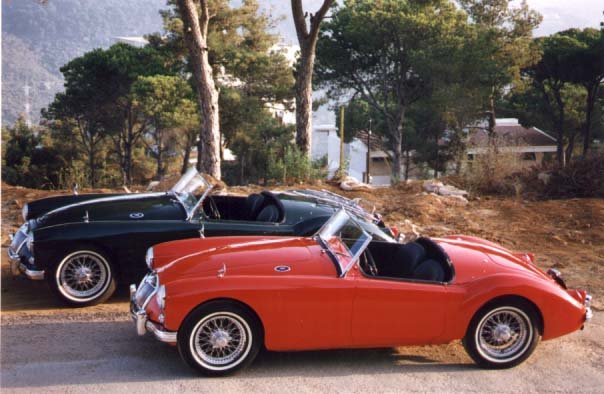
When Steve Fambro got bored building robots at a San Diego genetics company, he figured he could help keep his brain busy by building a kit airplane in his spare time. But his wife deemed the hobby too dangerous, so Fambro decided to build a car instead, one with low emissions and absurdly high mileage. Called the Aptera (Greek for "wingless"), the machine now exists as a working prototype. It has 2.5 seats, three wheels, weighs a feathery 1,500 pounds, and Fambro says his company will put the Aptera into production next October.
Specs may change between now and autumn 2008, but the current numbers look like this: 300 mpg, a price tag below $30,000, and 0-60 acceleration of 11 seconds (about a second slower than the Toyota Prius gas-electric hybrid). The Aptera will come in two versions: the all-electric Typ-1e; and the series-hybrid Typ-1h, with a small onboard gasoline engine capable of recharging the battery. According to Fambro the all-electric Aptera is expected to go roughly 120 miles on a full charge, while the series hybrid will travel 600 miles on a full battery and a full tank of gas — the equivalent of 300 mpg.
High Mileage + High Design
Fambro isn't trying to keep his inspiration source a secret. His MySpace page shows him beside a single-seat plane with a striking resemblance to his automotive creation. This sleek minimalism is what Jason Hill and his design firm (known simply as "11") brought to the Aptera.
Hill was scooped up by Mercedes right after graduating from Pasadena's Art Center College of Design. When he started his own firm 14 years later, Hill was doing special projects for Porsche. And when Fambro approached him with the first incarnation of the Aptera, Hill said "Let me at it."
Hill and his firm were entrusted with not only evolving the fiberglass bird into a consumer-friendly car, but also creating a complete user experience with its own brand identity. Ecological considerations were high on the list, and Hill readily incorporated flooring made from 100 percent recycled soda bottles, as well as seat, door, and overhead fabrics from post-industrial recycled sources.
The Aptera's roof houses a strip of solar cells that serve double duty. In hot weather they power the parked car's air conditioner, keeping the interior cool for when the driver returns. The same solar system also helps charge the central battery, adding supplemental power.
Since the majority of an automobile's energy is spent displacing air and hauling its own weight, a light and slippery design is vital. Hill helped smooth and lighten the Aptera by replacing the side mirrors and rear window with rear-facing cameras that display on three dashboard monitors. The already sleek package is rounded out with slick aesthetic touches, including a glowing exterior logo and accelerator/brake pedals embossed with plus and minus signs.
Fighting the Safety Stigma
Although Asian automakers have taken an early lead when it comes to greener cars, American automotive ingenuity is catching up fast. The spark, though, isn't coming from Detroit, but from comparatively microscopic startups fueled by Silicon Valley capital. One of Aptera's key investors is Idealab, better known for software than cars. Jumping into the game with Detroit's big hitters is no small thing, so these nimble companies are finding ways to fast-track their projects.
One favored method is to make three-wheeled vehicles that technically classify as motorcycles. Unburdened from the DOT's myriad safety criteria, small companies can proceed with far fewer hurdles. Makers of the ZAP! Alias, VentureOne and Carver One electric cars are all pursuing three-wheeled success.
But doubts about safety and road-worthiness are a common criticism from both consumers and competitors. Speaking at the brainy Gadgetoff conference, the co-founder of Tesla Motors, Martin Eberhard, showed video of the $100,000 Tesla electric Roadster in successful crash tests. Eberhard quipped that this is the difference between a product like his, and a "three-wheeled imaginary car that would never be safe on the highway."
Aptera founder Fambro insists his vehicle is not an overgrown motorcycle, and that it's every bit as safe as a comparable car. Within its fiberglass shell is a steel and aluminum safety cage inspired by Formula One racecars, and the Aptera's airbags are encased within its seatbelts. The Aptera also has a particularly wide wheelbase to provide stability, a 45-inch front crumple zone, and a cockpit that sits higher off the road than you'd expect, giving better visibility. Fambro says the Aptera has "performed beautifully" in computer-based crash tests. Next comes the real thing.
Step Right Up
For early adopters wanting to reserve an Aptera, the company is accepting $500 refundable deposits (they've received 400 to date). The financial commitment will guarantee a customer dibs on the first round of vehicles, and will also help Aptera judge which powertrain is more desirable.
If the Aptera comes to life, an all-electric and highway-ready car for under $30,000 will certainly change the game. Fambro and Hill are dead-set on seeing the Aptera through to commercial reality. "It's not just a show car that a manufacturer puts out and then you never see again," says Hill. "The Aptera is 90-percent production ready."
From Jacob Gordon at TreeHugger.com
DEALERSHIP DESIGN

